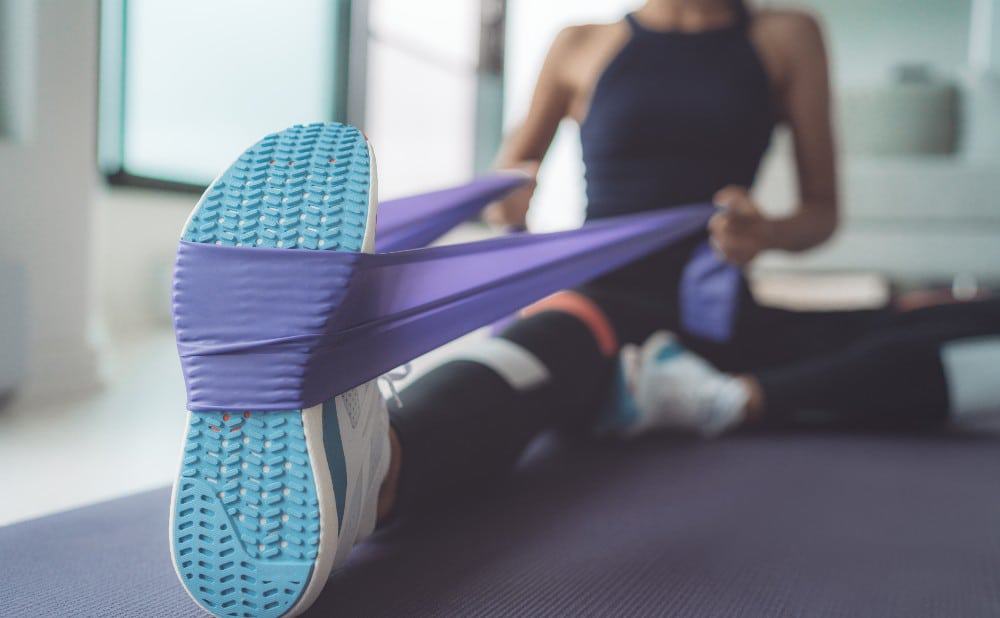Heel Pain Relief Tips for Active Adults
Heel pain in active adults is a very common problem, even if the definition of “active” may vary from person to person.
For some, an active lifestyle means strict weekly workout routines and setting personal goals. For others, it means breaking out on weekends to cut loose and maybe play some pick-up games with friends. And still others find themselves kept on their toes all day by the demands of work or duties.
Each of these levels of activity is completely valid—and all of them can result in heel pain, too.
All cases of persistent heel pain should be seen and treated professionally. There are many potential underlying causes, and only by properly identifying and directly addressing them can they be treated most effectively.
But we also understand that you’re busy and in pain now, so anything that might help with discomfort before you come to see us is worth a shot. While we can’t guarantee that all of the tips below will help your particular circumstances without first evaluating you, they will not hurt to try. And knowing whether and how well they work can even provide us important clues for our diagnosis!
Give Yourself a Rolling Break
A rolling massage beneath your foot can not only help relieve some of your heel pain, but also just feel great for its own sake.
While an official, brand name roller is perfectly fine to use, you are far from out of luck if you don’t have one. A simple tennis ball, golf ball, canned good or bottle can also function quite well as long as it can be easily and firmly rolled beneath the foot.
For a deluxe session, add cold therapy to the mix by freezing a plastic water bottle. (Make sure it is not totally full before freezing, in order to prevent it from bursting.) When you need some heel pain relief, simply take the bottle out of the freezer and roll it for a few minutes beneath your feet.
A couple caveats with the frozen treatment:
- Keep your socks on. Never expose your skin directly to a source of cold for any extended period of time.
- Do not roll anywhere that leaking water could cause a problem (like around electrical cords, for an extremely good example).

Take Time to Stretch Properly
This one is not just for the seasoned athletes out there. In fact, it can be even more important for those who only play occasionally, as well as those who face consistent strain through the day due to work.
There are a couple reasons why stretching can help you alleviate heel pain:
- Doing so before an activity can help your body acclimate and better prepare itself for the demands it is about to endure. This can help reduce pain from an already overstrained area of your body (such as from Achilles tendinitis), as well as improve your chances of preventing any new injuries.
- Many forms of heel pain – with plantar fasciitis being one common example – are aggravated when the body starts moving again after long periods of rest (such as sleeping). Stretching for a few moments before moving can help reduce this initial bout of pain.
There are multiple types of stretches that have the potential to help your heel pain, given your circumstances. We can help you determine the best one for your needs, but here is one example that anyone can try before getting out of bed in the morning. You will need a rolled-up towel, a belt, a resistance band, or some similar sort of strap.
- Sit on your bed with your legs out in front of you, knees as straight as you can comfortably have them.
- Place your strap around the upper part of one foot, just beneath the toes. Keep one end of the strap in each hand.
- Gently pull back on the strap, flexing the top of your foot back toward you. Do not tug or bounce.
- Hold the stretch for 15-20 seconds. You should feel a stretch, but not be in pain.
- Repeat 3-4 times per foot.
Change Your Footwear and/or Your Environment
If external influences are contributing to heel pain, removing or mitigating those obstacles as best as possible can have a positive influence.
This can mean switching to shoes that provide better support for your arches and heels, or provide better motion control. It could also mean using shoes that are especially designed for the rigors of your activities, such as actual running shoes or basketball shoes.
Other environmental factors, such as having to stand or walk around all day on hard surfaces, can be potentially mitigated through the use of anti-fatigue mats or segmented time for breaks or changes.
Get the Comprehensive Help You Need to Alleviate Your Heel Pain
While the above measures may provide some help, it is important to keep in mind that they are not expected to provide complete heel pain relief. If they do, that’s wonderful! But we are here to see you through if they don’t.
We are well versed in heel pain treatment and mapping the best routes to relief for each of our patients. Perhaps you have an abnormality in foot structure that can be addressed via custom orthotics, or a soft tissue injury that can benefit from accelerated healing via MLS laser therapy. Whatever our recommendations may be, we’ll be sure to fully discuss all your options with you and answer any questions you may have.
Call us at (720) 600-3380 to schedule an appointment at our Longmont office. Please do not hesitate to ask about telemedicine options if you prefer to consult with Dr. Yakel remotely.
© Colorado Center for Podiatric Sports Medicine | Privacy Policy

